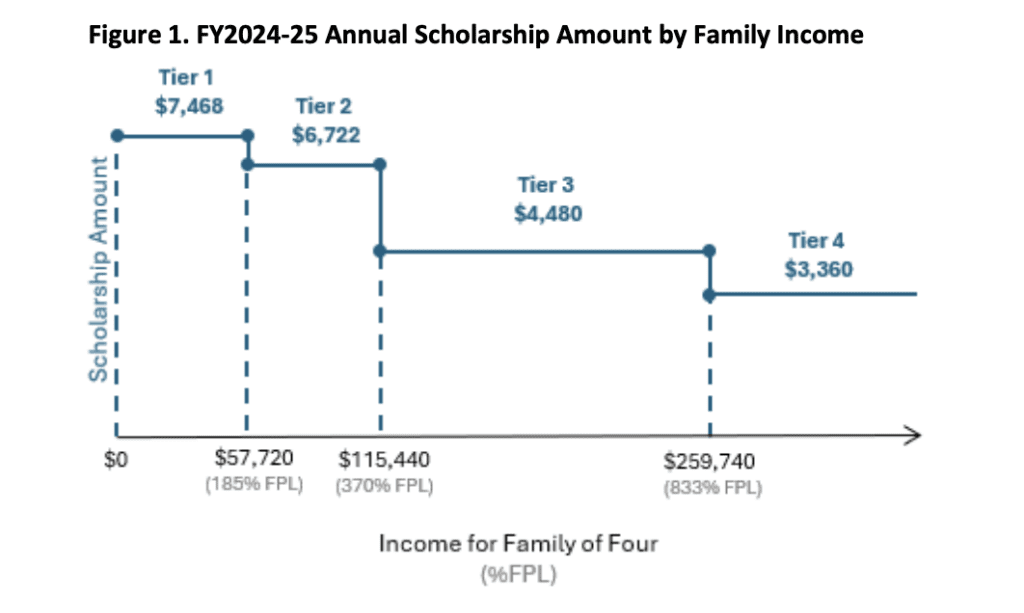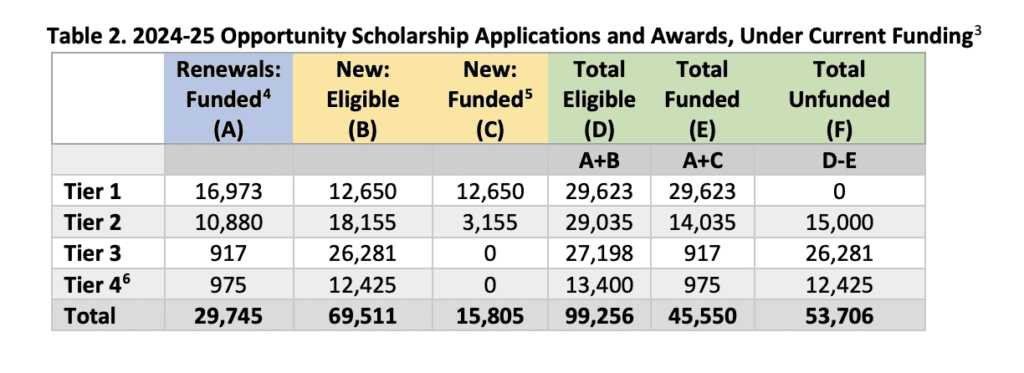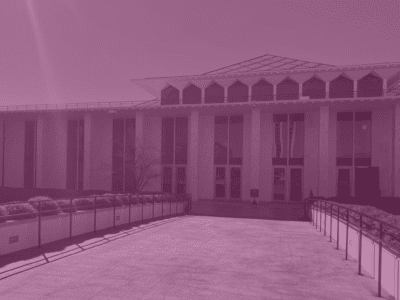
The General Assembly will reconvene on Monday, and Republican legislative leaders said on Friday they will vote on several spending initiatives, including clearing the waitlist for the Opportunity Scholarship Grant Program and funding enrollment growth for the K-12 and community college systems.
The mini budget bill allocates approximately $463 million toward Opportunity Scholarships this fiscal year, which would be retroactive to the beginning of this school year. Families would be eligible for a tuition reimbursement from their school, a press release from Sen. Phil Berger, R-Rockingham, said.
The bill also includes $64 million for enrollment growth across the N.C. Community College System, and $95 million recurring for K-12 enrollment increases.
“Families across North Carolina made it clear that they want a greater say in their child’s education. Whether you’re a single parent, a young family, or in a military household, educational freedom should be attainable for all,” Berger said. “This agreement addresses the increased demand for Opportunity Scholarships and includes the necessary funding for public school enrollment increases.”
The bill also includes funding to expand access to high-speed internet in rural communities and language that requires “sheriffs to cooperate with ICE.” You can read more about items included here.
![]() Sign up for the EdDaily to start each weekday with the top education news.
Sign up for the EdDaily to start each weekday with the top education news.
This announcement comes the same week that the North Carolina Office of State Budget and Management (OSBM) released an updated analysis predicting that if lawmakers clear waitlists for Opportunity Scholarships, state funding for public schools could decrease by nearly $100 million in the first full year with expanded funding.
In 2023, the Republican-led General Assembly removed income eligibility requirements and expanded funding for the Opportunity Scholarship Grant Program, leading to approximately 70,000 new applications for private school vouchers for the 2024-25 academic year.
The North Carolina State Education Assistance Authority (NCSEAA) — the state agency designated by law to administer K-12 scholarship programs — offered vouchers to 15,805 new students. That leaves nearly 55,000 students on the waitlist.
The General Assembly proposed bills to fully fund that waitlist during the short session but adjourned before passing the funding, or an updated budget, for this fiscal year.
According to the OSBM analysis, under current law, public school funding this year could decrease by $22 million. If the General Assembly does fully fund the waitlist, the analysis anticipates an additional $76 million decrease, resulting in a total decrease of $99 million.
“Republican legislators are returning to Raleigh to siphon hundreds of millions of taxpayer dollars out of public schools and give it to the wealthy through private school vouchers,” Democratic Gov. Roy Cooper said in a press release that linked to the analysis. “This would be disastrous for our public schools and the future of our state. They should invest in public education instead so we can give teachers an overdue pay raise.”

The OSBM provides budget and policy analysis as well as counsel to the state government, including the governor, state agencies, and General Assembly.
According to OSBM’s website, its mission is to “professionally serve North Carolinians by providing objective information and analysis to ensure a balanced budget and effective stewardship of public resources.”
Who is on the waitlist?
According to the NCSEAA, 13,511 new applicants in Tier 1 were sent offers, along with 2,294 new students in Tier 2. No new families from Tiers 3 and 4 were sent offers.
This means that all remaining waitlist students are in Tier 2, Tier 3, and Tier 4. (Tier 1 is for families with the lowest income levels.)
The max scholarship award is $7,468 for Tier 1 families. That amount decreases by tier level.

Last long session, lawmakers removed the requirement that students must attend public school to receive an Opportunity Scholarship.
Therefore, it is not clear how many of the 55,000 students on the waitlist already attend private schools.
State law does not require NCSEAA to give a report on updated Opportunity Scholarship data to the Department of Public Instruction (DPI) until Oct. 15. Only DPI will be able to determine how many of the students who applied for and received the voucher were in public schools in 2023-24.
By April 1, DPI must give a report to the General Assembly “on the cumulative difference in the current school year between the Opportunity Scholarship grant award amount for each prior public school attendee enrolled in a nonpublic school and the average State per pupil allocation for daily membership for a student in a public school unit.”
Because the new school year has already started, local districts are already experiencing any impact from the expanded voucher funding. However, until DPI gets the NCSEAA data, districts only know whether they have the same, fewer, or more students enrolled. If they have fewer students, they will not know how many of those students are attending private schools until the spring.
This means the impact of vouchers on public school enrollment is an estimation until DPI finishes its report. Enrollment matters because public school funding is based on average daily membership (ADM).
If lawmakers pass funding to clear the Opportunity Scholarship waitlist next week, it is not clear how many students currently enrolled in a public school will un-enroll and move to a private school.
While current law also says it is “the intent of the General Assembly to reinvest in the public schools any savings realized by the State each year, beginning in the 2025-2026 school year,” it is unclear how that process will work, or how much that will practically mean for districts.
The OSBM analysis does not include any potential savings districts would receive, in the case that a student who leaves public school accepts a voucher less than 100% of the state per pupil allocation ($7,468 for FY 2024-25).
More highlights from the analysis
According to the analysis, NCSEAA received about 30,000 eligible renewal applications for Opportunity Scholarships. The OSBM analysis only estimates the potential impact from new students.
The chart below shows a breakdown of the applications and funding by tiers.

Here is OSBM’s methodology for its analysis:
- Student already attending private school: Annual cost to the state increases from $0 to $7,319 (the estimated average award based on the distribution of new funded applicants in Tiers 1-2).
- Student moving from public to private school: Annual cost to the state decreases $149 by FY 2025-26, from $7,468 to $7,319, as follows:
- a. Private school receives $7,319 in FY 2024-25: estimated award based on the distribution of recipients in Tiers 1 and 2.
- Public school still receives $7,468 in FY 2024-25 per the arrears funding model. (OSBM notes that this model will lead to the “double funding” of students as they move from public to private schools.)
- Public school budget reduced by $7,468 in FY 2025-26: reflecting the public school unit’s (PSU’s) reduced enrollment.
“This framework highlights net increase in spending for students already attending private school and the net decrease in spending for prior public school awardees,” the analysis says. “Total statewide cost thus depends on the proportion of awardees who previously attended public school.”
The analysis says that “similar universal voucher programs across the country find that 13-25% of new recipients previously attended public school.”
Projected county impact
The analysis also includes an estimated county-by-county impact. While the new voucher applicants come from across the state, the analysis says applicants are concentrated in a few counties, like Wake, Mecklenburg, and Guilford.
Under current funding, if 19% of the 15,805 new scholarships went to prior public school students, OSBM predicts a $22.4 million loss in funding, or a -0.2% decrease. Across the state, this impact ranges from 0% to -0.5% decline in current funding.
You can view the full chart starting on page 5 of the analysis document.
If lawmakers fully fund the waitlist next week, OSBM predicts an additional $76.2 million decrease in public school funding, or an average -0.7% change. Across the state, this impact ranges from 0% to -1.6% decline in current funding.
Three counties would see more than a 1.25% decline in total state funding for K-12 public education, per the analysis: Bertie, Craven, and Hyde counties.
Another seven would see between a 1% and 1.25% decline: Chatham, Hertford, Jones, Moore, Northampton, Pitt, and Wake counties.
You can view the full chart starting on page 10.
In his press release, Cooper said the expanded vouchers “disproportionately impact rural North Carolina counties, where access to private education is limited and public schools serve as the backbone of communities.“
According to the release, 28 of North Carolina’s 100 counties have no or just one private school participating in the voucher program. All of those counties are rural.
The most recent annual report on private schools in North Carolina shows that in 11 counties, there were zero private schools during the 2023-24 school year: Alleghany, Ashe, Camden, Caswell, Edgecombe, Graham, Jones, Martin, Perquimans, Tyrrell, and Washington.
In another four counties, there is only one private school: Gates, Greene, Hyde, and Warren.
In another 17 counties, there are two private schools: Alexander, Avery, Bertie, Bladen, Caldwell, Cherokee, Chowan, Clay, Jackson, Macon, Mitchell, Northampton, Pamlico, Person, Polk, Swain, and Wilkes.
By comparison, there are 96 private schools in Mecklenburg County and 91 private schools in Wake County.
“Instead of funneling hundreds of millions more in taxpayer dollars toward vouchers for unaccountable private schools that would overwhelmingly benefit the wealthiest demographic in the state, the legislature should invest in public education so our state’s public schools, educators and students have the resources they need to thrive,” Cooper said.
Sen. Michael Lee, R-New Hanover, has said that he thinks expanding the number of Opportunity Scholarships will lead to more options for students over time.
“By increasing the number of Opportunity Scholarships at all levels increases demand and hopefully creates markets in those counties that just don’t have any other options,” he said. “I do think this particular program is like many programs. It’s going to help in the long run for those counties by developing and creating that market.”
While Republican lawmakers from both chambers agreed on further expanding the vouchers before adjourning for the session, they disagreed on giving additional raises to public school employees. Additional raises are not includes in the draft budget bill to be taken up next week.
“The concern that members have had is that they want to make sure that if we’re talking about education, that we’re doing so comprehensively, that we’re also addressing the traditional schools as well,” House Speaker Tim Moore previously said.
The legislature will be in session Sept. 9 through Sept. 11.
Recommended reading



